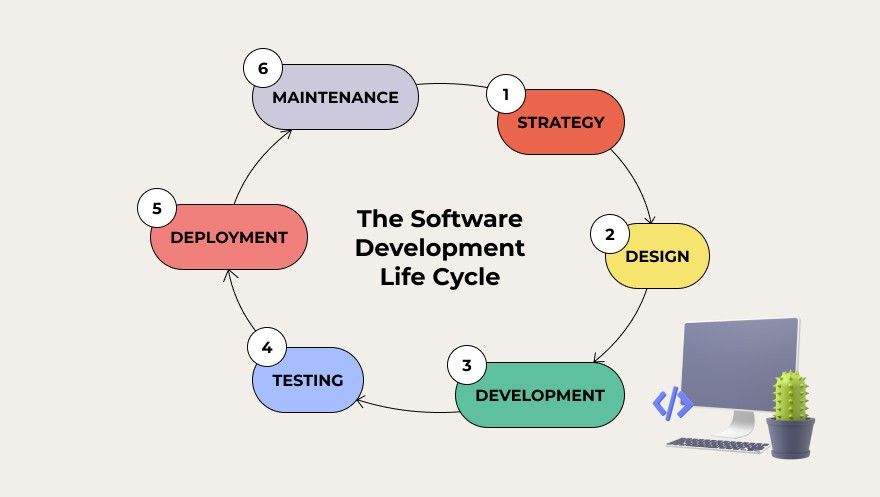Table of Contents
What is the true cost of software acquisition? This question is a cause for concern for almost every business that decided to purchase or develop a new system. And its importance does beyond the reflection “Can we afford such a substantial investment right now?” In the long run, it is the question of ROI and the value that software solutions deliver.
However, to get an insightful view of the success of your software purchase, you need to run a comprehensive assessment of the total cost of ownership (TCO). It is important to detect hidden costs and evaluate possible risks that can fluctuate TCO over time.
This article will cover how to calculate the total cost of ownership for custom software development, how to get results you can rely on, and how to leverage this data efficiently for better decision-making.
What is the Total Cost of Ownership (TCO)?
The total cost of ownership is a financial estimate that helps define the direct and indirect costs of purchasing and owning a product or service. TCO is widely used within different business spheres. In IT, the TCO of software calculates the sum of every possible expense associated with buying and owning this exact software solution.
The list of aforementioned expenses might include:
- hardware and software acquisition;
- software implementation;
- user training;
- software maintenance and support;
- software upgrade;
- any other costs you might have.
The Importance of Total Cost of Ownership When Outsourcing Software Development
Many companies, when opting in for custom software development, are facing a few important choices. First, the company should determine if they want to build an in-house development team or outsource the development. For various reasons, a big percentage of businesses choose outsourcing, which creates a second dilemma: what outsourcing vendor to choose?
Though we strongly advise against making the price the determinant factor for any decision, business executives tend who don’t have a lot of experience with software development, tend to compare potential partners mainly on this ground. It might seem like a simple way to save money, but in fact, it is a path to inflated total costs and additional expenses you have not predicted.
Low development rates, especially if they are above the market average, might say that the vendor sacrifices something in the process that other similar companies do not. It might be the seniority of the developers, the process reliability, etc. The low cost of the whole development achieved by a shorter deadline might say about a lack of attention to certain processes like quality assurance, software testing, etc.
All of these aspects might mean that you risk receiving a software piece of lower quality. And the optimized cost you expected will turn into additional maintenance costs, which, in our experience, will significantly exceed the difference you wanted to save.
Hence, when you are calculating how much money custom software is going to require, you need to consider all costs involved, not only the price your vendor charges for the development.
At the same time, to leverage the full potential of TCO, you should consider it together with the other metrics — return on investment (ROI). ROI will show what output you can expect from the money you put into software development and help you to evaluate if this investment is going to be profitable.

For example, the total cost of ownership for a software piece of $1 million might not give a clear image (more likely, it will scare off the upper management or your investors). However, in combination with the data that the ROI of software will reach $10 million, it will give a totally different perspective on the rationality of software acquisition.
TCO Analysis for Software
So, let’s dive into the process of actually calculating TCO for the new software piece your company decided to implement. To do that, you must consider four important variables.
Initial Cost
Basically, it is the acquisition costs for the new software.
Operating Costs
These costs cover the further steps of software lifecycle.

Retirement Costs
Even if you decide to retire an existing system, it doesn’t mean that it will just disappear and stop needing any type of support. You still need to ensure that the data stored in the system would be transferred to a safe location. At the same time, the old system can be repurposed and stay useful for your business.
The Challenges with TCO Calculations
When you calculate TCO, you should be aware that there are some gaps that would decrease the accuracy of your analysis and devalue its importance. Hence, knowing the downfalls will help you to avoid them, or at least mitigate their impact.
Inflation
It might be really hard to predict the real level of inflation in our ever-changing world of constant crises. However, it doesn’t mean that you should just neglect this factor and calculate the overall TCO without inflation impact. Truth be told, if you take into account at least the inflation average for your country, you will be able to get a more realistic estimation than without any inflation adjustment at all.
Risks
Traditionally, risks are not considered in TCO analysis, but if you want to get a more realistic view, we suggest adding it. For every company, information technology risks will vary, possessing specific threats you should be ready to take care of. Run a detailed risk assessment, think through mitigation plans, and plan possible expenses.
Missing Cost Components
Every software development project is unique, and the more complex it is, the more the chances of missing some cost components while assessing it. So, carefully review the timeline of the project, its scope, and the involvement of other specialists to ensure that you haven’t forgotten about something that will suddenly pop up in the middle of the development and eat a big part of your budget.
How to Optimize TCO Calculation & Leveraging?
So, how to make sure that the process of calculation TCO is efficient and that the data really helps you to make decisions? Here are a few tips we prepared for you that should help you to calculate total and long-term costs, as well as put them into use.
- If you need to calculate TCO only for the acquisition of a new system, you can choose a bottom-up approach: brainstorm all possible expenses, and make some assumptions. It would be enough for this case. But if you want to calculate TCO for your whole IT operations, you might want to do the opposite and go top-down: assess the whole scope of IT costs and then categorize them.
- Always use TCO in context with other metrics like ROI and compare it with the business value delivered. Don’t turn this into the chase after reduced expenses and reduced TCO number, as the total cost of ownership alone isn’t a great ground for insightful and reasonable decision-making.
- The next point emerges from the previous paragraph. When you are operating with such terms as expenses, you should understand that they are not only variables. There are also quality and value, which are interdependent. So, if you decrease the lifetime costs, the quality and value also go down, and vice versa. Hence, you need a more deep and more versatile analysis than it might seem.
In Conclusion
The total cost of ownership can help you achieve a lot when you are planning to acquire a custom software system. First, it is a powerful rationalizing tool you might use to convenience decision-makers to choose a certain solution. Second, in combination with other metrics, it can give you an insightful look into the value the implementation and ownership of the solution will bring you. Thirdly, it can help you to compare the offers of different vendors and select the one with lower long-time costs and higher value delivery over time.
The impact of TCO metrics is clear, but don’t get hung up on it. Remember that this data will stay relevant when compared with other defining indicators.
FAQ



